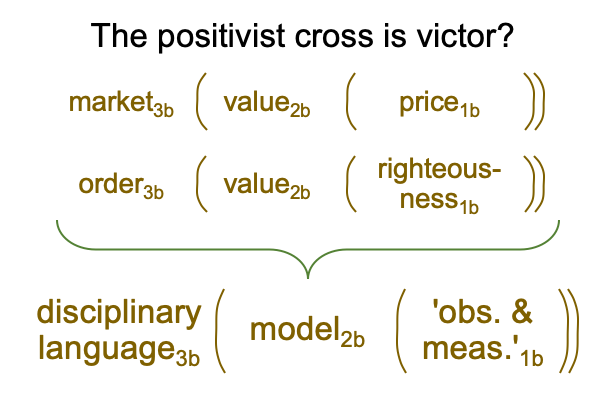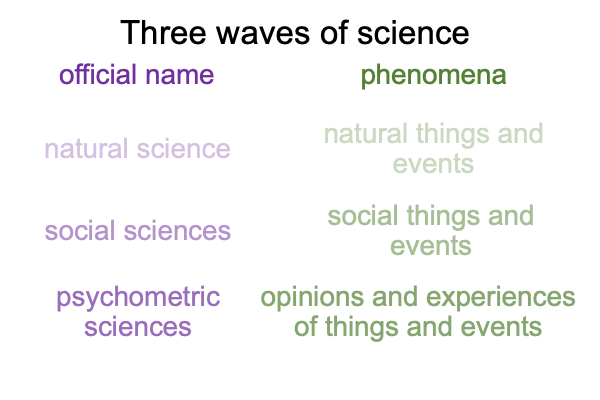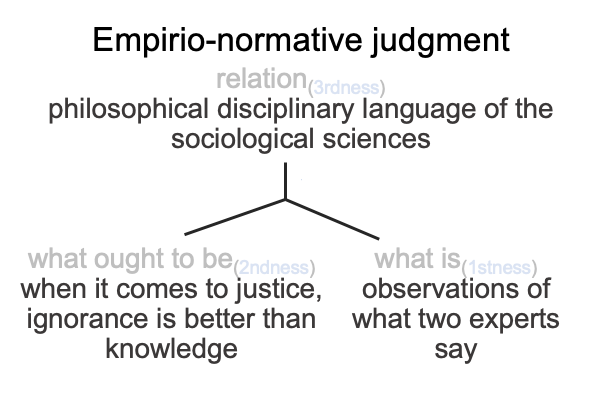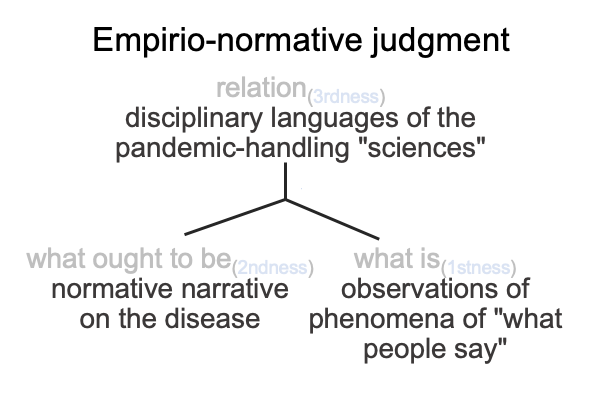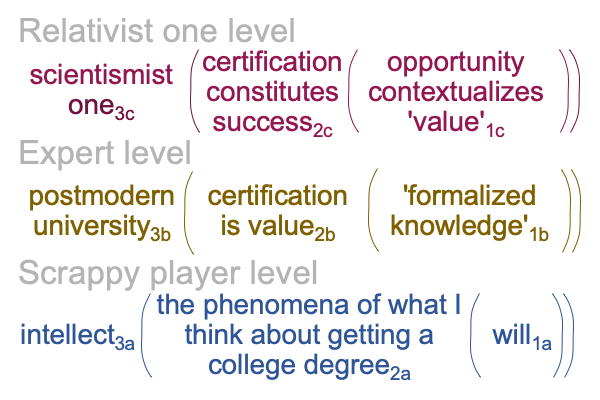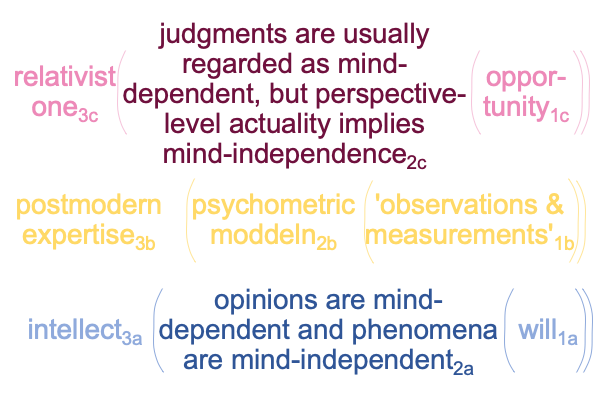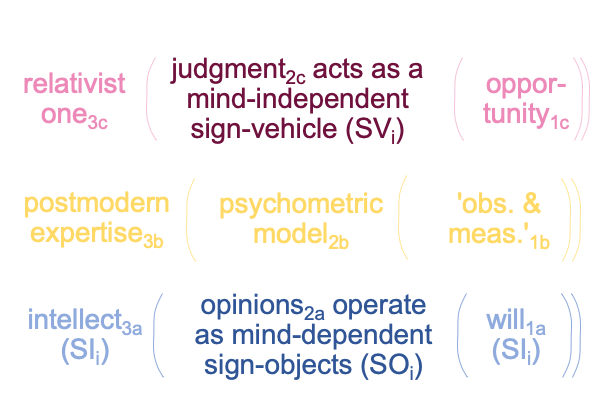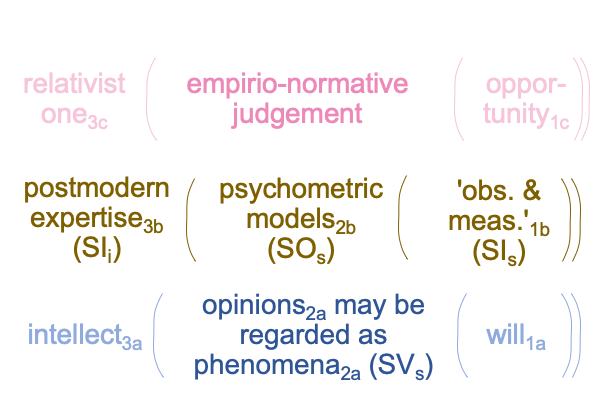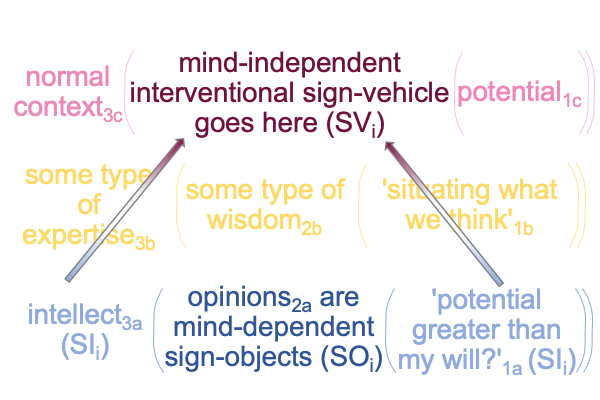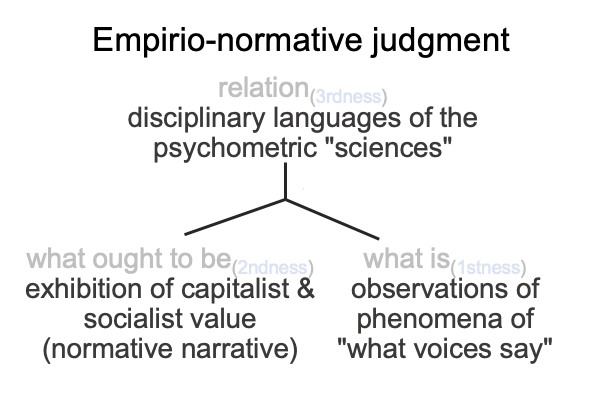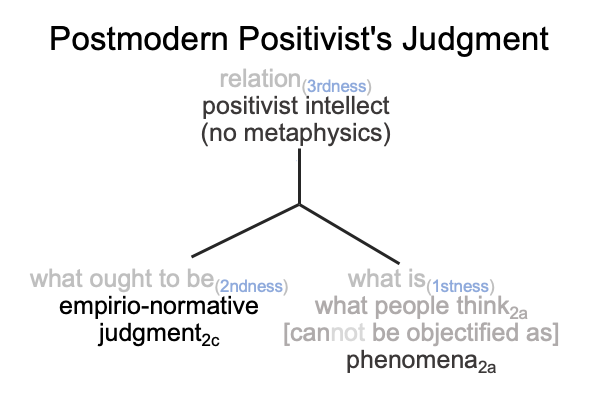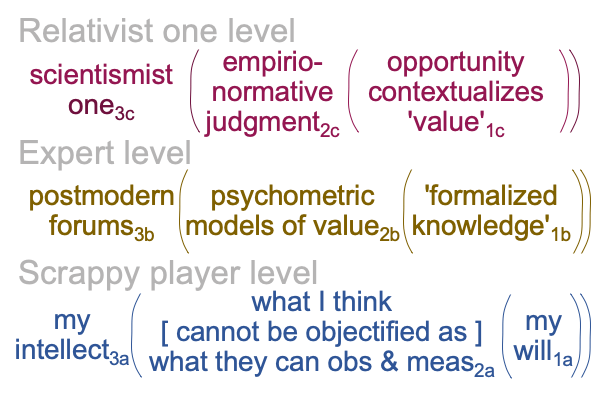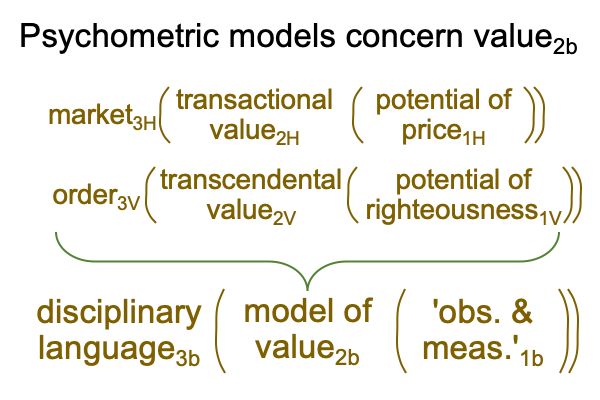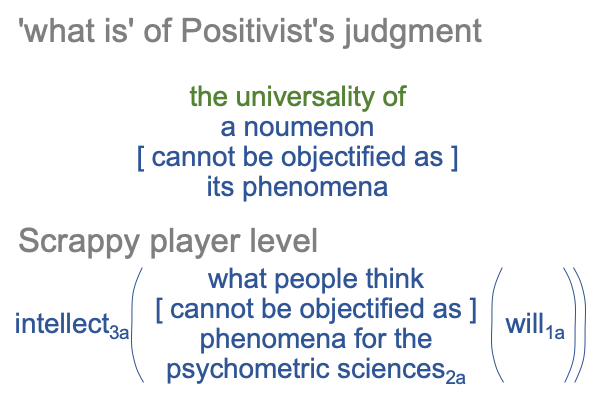Looking at Steve Fuller’s Book (2020) “A Player’s Guide to the Post-Truth Condition” (Part 13 of 26)
0121 Chapter seven is titled, “Science As The Offer That Cannot Be Refused in the Post-Truth Condition”.
0122 How can this be?
Have you ever refused a gift?
I mean, like the gift of a famous politician’s trust in science?
Yeah, here is the gift2c that is fashioned into legislation that defines “success”2c in the post-truth condition. Success2c is more than merely achieving an actionable judgment2c. Success2c leads to actions that set the stage for normal people asking, “What is happening?3a” in regards to the possibility that ‘something’ is happening1a. Success2c opens a cognitive space2a that is observed and measured1b by experts3b in the psychometric sciences of marketing and advocacy.
0123 As an aside, I ask, “Does the one of scientism3c care whether its judgment2c leads to human flourishing or immolation?”
I don’t think so.
If “trust the science” means “trusting the judgment of the Queen Bee”, then I definitely don’t think so.
0124 Okay, instead of that distraction about a gift, let me blunder forward with another aside, this time asking, “How does an empirio-normative judgment2c serve as an interventional sign-vehicle (SVi) whose sign-object is what people think is happening2a (SOi).
The question, “What is happening?”, appeals to the intellect3a. The intellect3a associates to the interventional sign-interpretant (SIi).
The issue of ‘something’ happening addresses the will1a. The will1a also associates to the interventional sign-interpretant (SIi).
125 So, while Fuller frames the offer3c in terms of advertising and other ways that an expert can provide value by informing the scrappy player of options that are outside the cognitive space that the player is already familiar with, I frame the offer2c in terms of a general structure for the empirio-normative judgment.

For example, the disciplinary language of journalism (relation, thirdness) brings a normative narrative (what ought to be,secondness) into relation with observations of what people say (what is, firstness).
Not everything that people say is regarded as phenomena. Only opinions that are (1) not metaphysical and (2) pertinent to the topic at hand are so regarded.
0126 Just like a scientific discovery2c, the empirio-normative judgment2c is an offer2c, a gift2c, that cannot be refused. Especially, an empirio-normative judgment2c cannot be refused once it is constellated as the purchase of a product or a legislative edict or decree.
0127 Of course, I3a,1a face a choice.
On one hand, I2a better get on the current paradigm bus if I want to be a certified expert2b and receive the blessings of opportunity1c.
On the other hand, I2a should seek to understand the gift2c that wants to transform my voice2a into phenomena2a that it can observe and measure1b.
0128 On one hand, I may accommodate the domination of the empirio-normative judgment and adjust what I say to what experts desire to observe and measure.
On the other hand, I may… what?.. say what I think regardless of what is happening3a and the potential of ‘something’ happening1a, only to have my voice2a simply disregarded as not phenomena2a?
0129 Fuller offers the example of the potlatch tradition among tribes of the Pacific Northwest. British colonizerssuppress the native tradition because it makes no sense at all. Why spend your time hoarding all sorts of things, such as barrels of seal fat and thousands of smoked salmon filets, in order to destroy and eat them all in one gigantic and crazy fun party? It’s like those damn French in New Orleans with their Mardi Gras. The bean-counting experts of the British Empire will not have it.
I suppose that the downside of the potlatch tradition is that everyone gets trapped in a weird competition in regards to “honor”, requiring that each person assist one or another big-man in showing that my big-man can throw a more magnificent party than your big-man.
0130 So, in regards to an empirio-normative judgment2c, here is the judgment of the Euro-centric administrators.

The disciplinary languages of the British colonizers (relation, thirdness) brings a normative narrative that the potlach tradition is an entrapment system (what ought to be, secondness) into relation with observations of claptrap about which big-man throws the best party (what is, firstness).
0131 Now, this actionable judgment makes sense in the post-truth fashion where two interrelated elements are contested.
‘What is’ and relation concern a contest between true and false, where “true” consists of British administrators’ observations and measurements of phenomena and “false” consists in all those opinions and facts than cannot be formalized through expert observations and measurements. Why? Everything the natives say is rubbish about parties.
‘What ought to be’ and relation concern a contest over how the matter is to be decided. The experts not only expect to have their way1c, but them having their way2c signals their virtue2b, which is more “objective” than the “subjective” opinions and facts2a that the experts might consider if they could accept them as ‘sensible enough to take into consideration’1b. Fuller indicates how the matter is to be decided in the title of chapter seven. Science is the offer that cannot be refused in the post-truth condition.
Trust our empirio-normative judgments.






